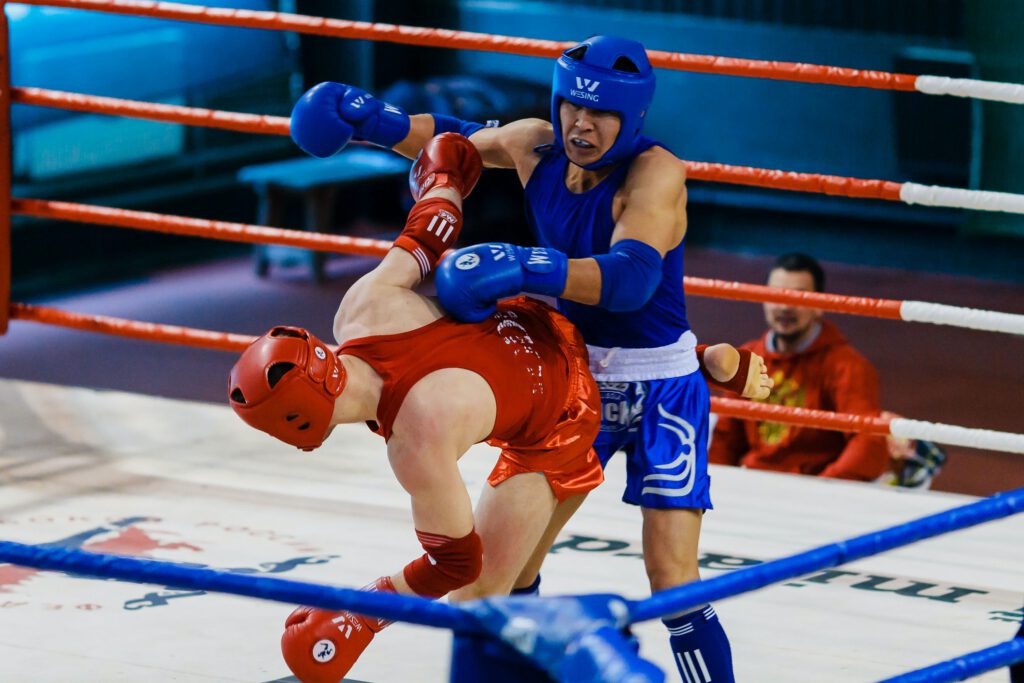boxing footwork
Boxing Footwork: The Top 10 Tips for Better Movement in the Ring
Stay Light on Your Feet: Keep your weight evenly distributed on both feet at all times, so you can easily shift your weight and move in any direction.
Stay Balanced: Good balance allows you to maintain control over your movements and make quick changes of direction.
Practice Shuffling: Shuffling is a basic footwork drill that helps you move in any direction while keeping your balance.
Work on Your Foot Speed: Quick feet are essential in boxing, so make sure to work on your foot speed by practicing different footwork drills.
Use Small Steps: Taking small steps allows you to maintain control over your movements and make quick changes of direction.
Practice Moving in a Circle: Moving in a circle helps you to develop your peripheral vision and keep an eye on your opponent.
Practice Moving Forward and Backward: It’s important to be able to move forward and backward efficiently, so make sure to practice these movements.
Work on Your Footwork with a Partner: Partner drills are a great way to work on your footwork, as they allow you to practice against someone who is trying to throw punches at you.
Make Footwork a Priority in Your Training: Footwork should be a priority in your training, so make sure to spend time practicing different footwork drills.
Make Footwork a Habit: Make footwork a habit in your training, so that it becomes second nature in the ring. The more you practice, the better you will become.
By following these 10 tips, you can improve your boxing footwork and become a more elusive and effective fighter in the ring.
5 long combinations that can help improve your footwork in boxing
- Jab-Cross-Hook-Cross-Uppercut-Step-Slip-Step-Jab
- Jab-Step-Slip-Jab-Cross-Step-Slip-Cross-Hook
- Slip-Jab-Slip-Cross-Step-Jab-Step-Hook-Cross
- Slip-Jab-Cross-Step-Slip-Jab-Hook-Step-Cross
- Jab-Step-Cross-Slip-Jab-Hook-Step-Slip-Cross
When practicing these combinations, focus on using your footwork to avoid punches and get into position to throw your own shots. The goal is to become comfortable and efficient with movement while throwing punches, making you a more well-rounded and elusive fighter.

Professional boxers know for their expert footwork
To learn more about boxing footwork, it is recommended to study the techniques of professional boxers who are known for their superior footwork. Some of the best boxers to watch include:
Floyd Mayweather Jr. – known for his quick and precise footwork, he was able to avoid punches and control the ring with his movement.
Pernell Whitaker – a defensive master, he was known for his exceptional footwork and movement, making him one of the toughest boxers to hit.
Muhammad Ali – Ali’s footwork was a key part of his unique style and he was known for his quick, light-footed movement and ability to dance around the ring.
Sugar Ray Leonard – Sugar Ray was known for his exceptional footwork, which allowed him to get in and out of range quickly, making him a difficult target to hit.
Vasyl Lomachenko – Lomachenko’s footwork is considered among the best in boxing history, allowing him to get in and out of range with ease, making him a difficult opponent to face.
Leg exercises for better footwork
There are exercises that a boxer can do to improve leg muscles to enhance their boxing footwork. Some examples include squats, lunges, plyometric exercises, calf raises, and jump rope training. These exercises can help increase strength, stability, and agility in the legs, all of which are essential for effective footwork in boxing. Additionally, incorporating agility drills, such as ladder drills or cone drills, can help improve coordination and quickness in the feet. It’s important to consult with a professional trainer or coach to ensure that these exercises are performed properly and to create a well-rounded training program that incorporates both footwork specific exercises and other aspects of boxing training.
Weekly program to help improve a boxer's footwork through exercises that target leg muscles:
Monday:
- Warm-up: 5-10 minutes of jumping jacks and light stretching
- Squats: 3 sets of 10 reps
- Lunges: 3 sets of 10 reps per leg
- Box jumps: 3 sets of 10 reps
- Cool-down: 5-10 minutes of light stretching
Tuesday:
- Warm-up: 5-10 minutes of jumping jacks and light stretching
- Deadlifts: 3 sets of 10 reps
- Calf raises: 3 sets of 10 reps
- Box step-ups: 3 sets of 10 reps per leg
- Cool-down: 5-10 minutes of light stretching
Wednesday:
- Rest day
Thursday:
- Warm-up: 5-10 minutes of jumping jacks and light stretching
- Leg presses: 3 sets of 10 reps
- Hamstring curls: 3 sets of 10 reps
- Box squats: 3 sets of 10 reps
- Cool-down: 5-10 minutes of light stretching
Friday:
- Warm-up: 5-10 minutes of jumping jacks and light stretching
- Box lunges: 3 sets of 10 reps per leg
- Box step-ups: 3 sets of 10 reps per leg
- Box squats: 3 sets of 10 reps
- Cool-down: 5-10 minutes of light stretching
Saturday:
- Rest day
Sunday:
- Warm-up: 5-10 minutes of jumping jacks and light stretching
- Box jump squats: 3 sets of 10 reps
- Box calf raises: 3 sets of 10 reps
- Box step-ups: 3 sets of 10 reps per leg
- Cool-down: 5-10 minutes of light stretching
Week 2: Repeat week 1 with an increased weight or resistance level if possible.
This program can be adapted to meet individual needs and can be adjusted as you progress and get stronger. The important thing is to stay consistent, work hard, and have fun!

